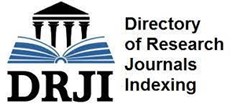Subject Area
Craniocervical junction, Trauma
Document Type
Original Study
Abstract
Background Data: Several methods of treatment of odontoid fractures have been used. These have ranged from rigid immobilization to atlantoaxial fusion. Odontoid screw osteosynthesis is gaining popularity. Purpose: To define the efficacy and safety of odontoid screw fixation in the management of odontoid fractures and to report the clinical and radiological results. Study Design: A prospective cohort study of odontoid fractures treated with odontoid screw osteosynthesis. The study was conducted in Cairo university hospital, Egypt and AOA Neuro-spinal Centre, Libya in the period from January 2007 to October 2010. Patients and Methods: Over the period from January 2007 to October 2010, twentytwo patients, 17 males and 5 females, with a mean age of 32.5 years were included in this study. These were 19 odontoid type-II and 3 shallow type-III fractures. All patients underwent odontoid screw fixation using a single screw.Results: Mean operative time was 80 minutes and mean blood loss 150 ml Patients were followed for a mean period of 20.6 months. Nineteen patients (87%) obtained a good or excellent result on the Smiley Webster scale. Fourteen patients (64%) obtained a bony union, 7 (32%) a stable fibrous union and one patient (4%) developed a pseudoarthrosis. One patient had a misplaced screw that was successfully revised and another patient had displacement of the screw with re-displacement of the fracture at three months follow up. He had removal of the screw and underwentatlanto-axial fusion. Conclusion: This study has proven the efficacy and safety of odontoid screw osteosynthesis in selected types of odontoid type II and shallow type III fractures. (2012ESJ024)
Keywords
Odontoid fracture, upper cervical spine, odontoid screw fixation, anterior odontoid fixation, osteosynthesis of odontoid
How to Cite This Article
Taha, Hossam and Facharzt, Hesham
(2012)
"Safety and Efficacy of Anterior Odontoid Screw for the Management of Odontoid Fractures. A Series of 22 Patients.,"
Advanced Spine Journal: Vol. 3
:
Iss.
1
, Article 3.
Available at: https://doi.org/10.21608/esj.2012.3789























